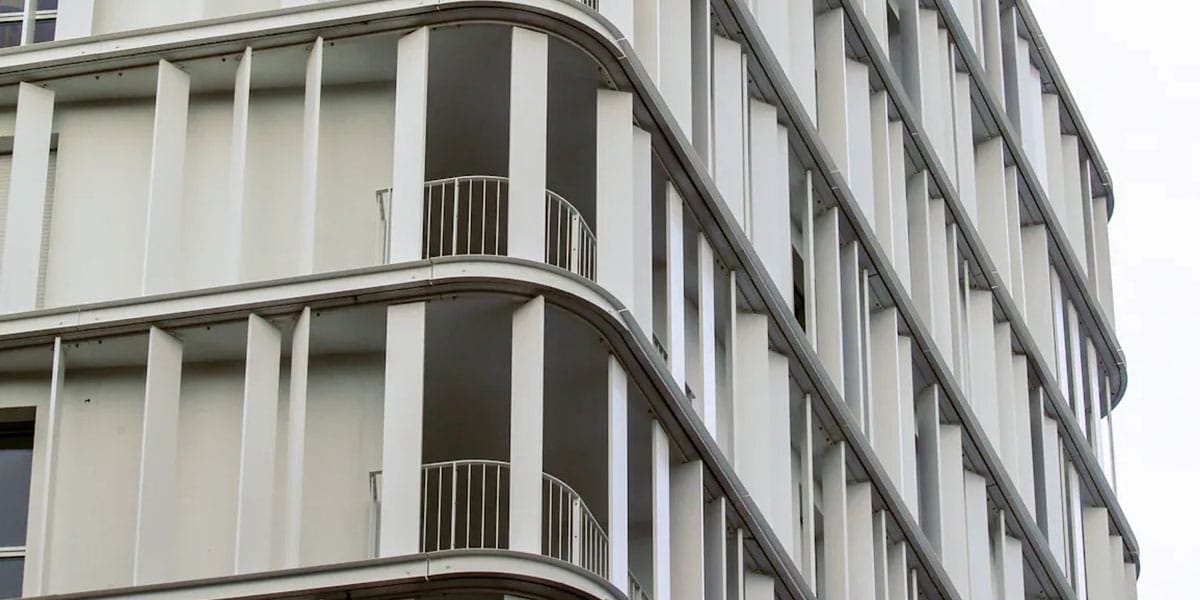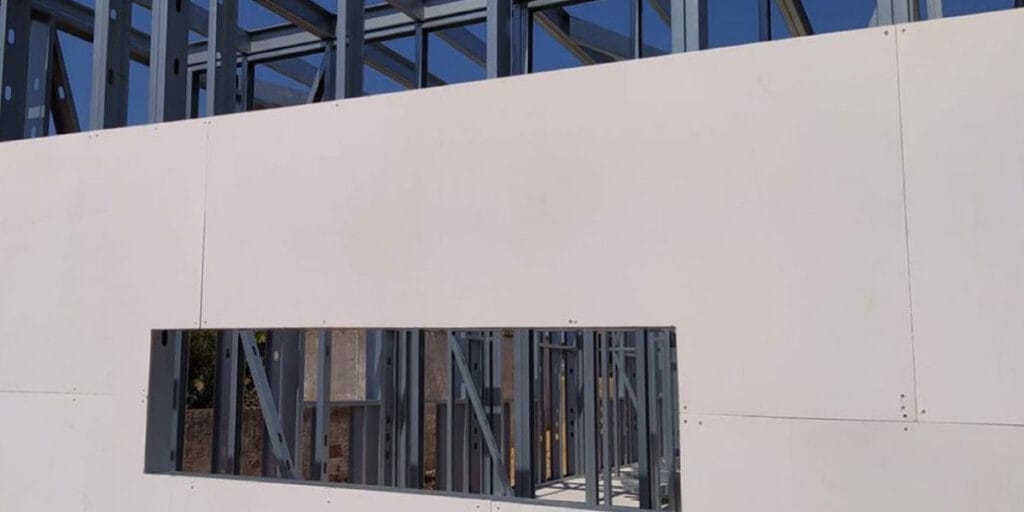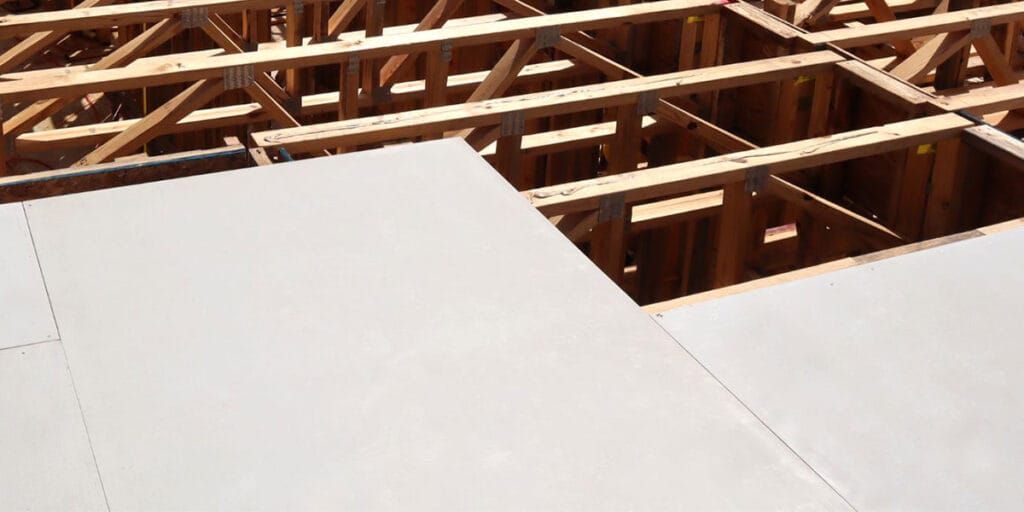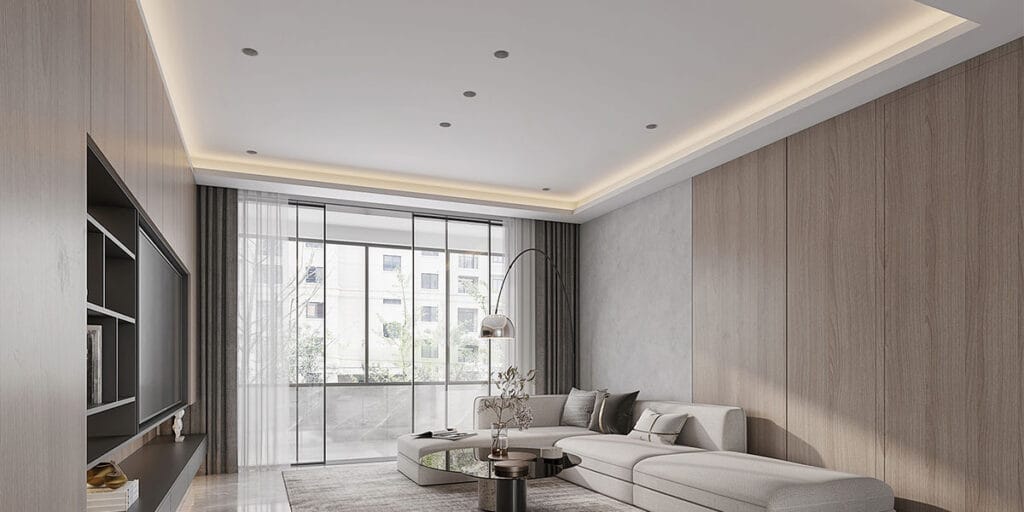
12 Jun What Are the Applications of Magnesium Sulfate Boards in Modern Construction?
Table of Contents
Magnesium sulfate boards application is revolutionizing construction with their diverse uses. They are utilized for walls, floors, and fireproof barriers. The demand for green building materials is projected to grow by 70% in the next 15 years. These boards play a crucial role in eco-friendly building designs. Additionally, they contribute to reducing construction waste, which could reach 2.2 billion tons by 2025. Implementing magnesium sulfate boards makes buildings stronger, safer, and more sustainable for the planet.
Key Takeaways
Magnesium sulfate boards are light and simple to put up. They are great for DIY projects and save on work costs.
These boards resist fire better than regular materials, making buildings safer.
They block moisture and mold, so they work well in wet places like kitchens and bathrooms. This helps keep indoor air healthier.
Picking magnesium sulfate boards can save money over time because they last long and use less energy.
These boards are good for the environment and help with green building. They lower harm to nature and meet eco-friendly standards.
Key Properties of Magnesium Sulfate Boards
Fire Resistance and Safety
Magnesium sulfate boards are great at resisting fire. They help make buildings safer by staying strong under high heat. Unlike gypsum boards, they stay cooler during fires.
Board Type | Maximum Temperature (°C) | Time (min) |
|---|---|---|
Gypsum Board | 169 | 120 |
Magnesium Board P1 | 118 | 120 |
Magnesium Board P2 | 91 | 120 |
Magnesium Board P3 | 94 | 120 |
This table shows how magnesium boards handle fire better than gypsum. They stop heat from spreading, which keeps homes and workplaces safer.
Using magnesium sulfate boards lowers fire risks and improves safety rules for buildings.
Moisture and Mold Resistance
Magnesium sulfate boards also resist water and mold. They don’t soak up water, so they won’t swell or crack in wet places. Even in humid areas, they stop mold from growing.
For instance, these boards can last 60 weeks in 90% humidity without leaking. This makes them perfect for bathrooms, kitchens, and other damp spaces. Their mold resistance keeps indoor air clean and healthy, helping people breathe easier.
Durability and Longevity
Magnesium sulfate boards are strong and last a long time. They can handle heavy impacts and loads without breaking. Chloride-free types last even longer by resisting water and mold damage.
Evidence Description | Performance Aspect |
|---|---|
Withstand 60 weeks in 90% humidity without leaking water | Moisture resistance |
Do not swell, crack, or warp in damp areas | Durability in wet conditions |
Tough against impacts and heavy loads | Physical stress resistance |
Chloride-free boards resist water and mold, lasting for decades | Longevity and maintenance savings |
Choosing magnesium sulfate boards means fewer repairs and lower costs over time. They work well for homes and businesses, staying strong for many years.
Lightweight and Easy Installation
Magnesium sulfate boards are light and simple to use in building. They are easier to carry than heavier materials like drywall. A 12mm thick magnesium board weighs 1.5 to 2 pounds per square foot. Drywall of the same thickness weighs 1.6 to 2.2 pounds per square foot. This small weight difference makes magnesium boards simpler to move and install.
Builders like how these boards save time on projects. Installing them is similar to putting up drywall. You use the same tools and methods for both. But because they are dense, special cutting tools may be needed for exact sizing. This helps make installation smoother and faster.
Tip: If you’re doing a DIY project, magnesium sulfate boards are a smart choice. Their lightweight design makes lifting and placing them easier for beginners.
Using magnesium sulfate boards can speed up building work and reduce effort during setup. Their light weight makes them great for homes and businesses alike.
Eco-Friendly and Non-Toxic Composition
Magnesium sulfate boards are a green option for today’s construction needs. Making them uses lower heat, which helps the environment. Over time, they absorb 20-40% of CO2, making them better than cement.
These boards are also safe because they don’t have harmful chemicals. They are free of ammonia, formaldehyde, benzene, silica, and asbestos. This keeps indoor air clean and safe for people. Plus, they can be recycled, which cuts down on waste and pollution.
Note: Magnesium sulfate boards don’t harm landfills, making them perfect for eco-friendly builders.
Their green features match the rising need for sustainable building materials. Choosing magnesium sulfate boards helps protect the planet and keeps buildings safe for people inside.
Magnesium Sulfate Boards Application in Modern Construction

Wall Panels and Partitioning
Magnesium sulfate boards work well for walls and partitions. They are light, making them easy to carry and install. At the same time, they are strong and last a long time. These boards can create walls that look nice and stay sturdy. They also help keep buildings safe by resisting fire.
Besides fire safety, these boards resist water, which stops mold. This makes them great for damp places like bathrooms and kitchens. They last longer and help keep the air inside clean and healthy.
Real-life projects show how useful magnesium sulfate boards are for walls. In Australia, a green housing project used them for fire safety and insulation. This cut energy use and lowered upkeep costs. In the U.S., a commercial building used these boards for inside and outside walls. This improved fire safety and saved energy, attracting eco-friendly renters.
Tip: Thinking of remodeling? Use magnesium sulfate boards for partitions. They are strong, versatile, and worth the cost.
Flooring and Substrates
Magnesium sulfate boards are tough and reduce noise, making them great for floors. They can handle heavy weight and impacts without breaking. Their water resistance keeps them from swelling or bending in wet areas.
These boards are also great at blocking sound. A 6mm board can block 29dB of noise, while thicker ones block over 42dB. This makes them perfect for quiet spaces like homes and offices.
Key Benefits for Flooring Applications:
Strong and long-lasting
Blocks noise well
Fireproof and water-resistant
Light and easy to install
“Magnesium sulfate boards are known for reducing noise, making them ideal for quiet spaces.”
Using magnesium sulfate boards for floors gives you strength, safety, and comfort. They block noise and resist water, making them a smart choice for homes and businesses.
Roofing and Underlayment
Magnesium sulfate boards are becoming popular for roofs and underlayment. They keep heat in better than cement boards, saving energy. With an R-value of 0.20 to 0.40 per inch, they help control indoor temperatures.
These boards also resist fire, adding safety to roofs. Their water resistance stops leaks and mold, keeping roofs in good shape for years.
Advantages in Roofing Applications:
Better at keeping heat in than cement boards
Fire-resistant for added safety
Stops water damage and mold
For example, MagPanel MgO boards are better at keeping heat in than cement boards. They also handle bad weather like frost and cold, making them great for roofs.
Adding magnesium sulfate boards to roofs gives you safety, durability, and energy savings. They protect buildings and help lower energy bills over time.
Fireproof Barriers and Ceilings
Magnesium sulfate boards are great for fireproof barriers and ceilings. They resist fire, making buildings safer. These boards work well in places needing fire protection, like stairwells, hallways, and ceilings in homes or businesses.
They go through strict tests to meet fire safety rules. For instance, the ASTM E136 test checks if materials don’t burn. Magnesium sulfate boards pass this test, proving they are noncombustible. Another test, ASTM E84, measures how fast flames spread and how much smoke is made. These boards often get Class A ratings, showing low flame spread and little smoke.
Test Standard | What It Checks | Result |
|---|---|---|
ASTM E136 | Noncombustibility | MgO boards pass as noncombustible |
ASTM E84 | Flame spread and smoke | MgO boards often get Class A ratings |
These tests show how well magnesium sulfate boards handle fire. Using them helps make buildings safer and follow fire safety laws.
Another benefit is their light weight, which makes them easy to install on ceilings. They also resist water, so they won’t get damaged in damp areas. Whether building new or fixing old spaces, these boards are a strong choice for fireproof barriers and ceilings.
Tip: If fire safety matters to you, try magnesium sulfate boards. They are easy to use and perform well in tough conditions.
Prefabricated Construction and Modular Designs
Magnesium sulfate boards are changing how prefabricated and modular buildings are made. They are light, strong, and simple to use, making them perfect for factory-built parts. You can use them for walls, floors, and ceilings in modular units to ensure strength and durability.
In prefabricated construction, speed and cost matter a lot. These boards are easy to cut and install, saving time. Their light weight lowers shipping costs and speeds up assembly. This helps finish projects faster and stay within budget.
They also improve modular designs by resisting fire, water, and mold. For example, a modular home with magnesium sulfate boards will have better insulation and fire safety than one with older materials. This makes the building stronger and safer.
Key Benefits for Prefabricated Construction:
Light and easy to move
Fire-resistant for safety
Stops water and mold for long-lasting use
Quick to install, saving time
Magnesium sulfate boards are also eco-friendly. They fit well with green building ideas, making them a top pick for sustainable projects. By using these boards, you can build modular designs that are fast, safe, and good for the planet.
“Using magnesium sulfate boards in prefabricated buildings combines speed, safety, and sustainability.”
Whether for homes, offices, or other spaces, magnesium sulfate boards offer the strength and flexibility you need. Their eco-friendly features make them a smart choice for modern building methods.
Comparison with Other Materials

Advantages Over Drywall
Magnesium sulfate boards have many benefits compared to drywall. They are better at handling fire, water, and wear.
Fire Resistance: These boards can resist fire for up to 4 hours. Drywall only lasts about 1 hour, making magnesium boards safer for fire-prone areas.
Moisture Resistance: Unlike drywall, which soaks up water and gets damaged, magnesium boards stay strong in wet places.
Durability: Tests show magnesium boards last 20-30 years, while drywall lasts just 10-15 years. This means fewer replacements are needed.
Soundproofing: Magnesium boards block noise better than drywall, making rooms quieter.
Property | Magnesium Sulfate Board | Traditional Drywall |
|---|---|---|
Fire Resistance | 1 hour | |
Moisture Resistance | Excellent | Poor |
Durability | 20-30 years | 10-15 years |
Soundproofing (STC) | Higher | Lower |
If you need a material that is safe, strong, and quiet, magnesium sulfate boards are a great choice.
Tip: Use magnesium sulfate boards in wet or fire-risk areas for better results.
Benefits Compared to Plywood
Magnesium sulfate boards are also better than plywood for building projects. They are safer, stronger, and more eco-friendly.
Fire Resistance: Magnesium boards don’t burn and can resist fire for 60-90 minutes. Plywood burns easily and offers no fire protection.
Moisture Resistance: Plywood absorbs water and swells, but magnesium boards resist water and mold.
Durability: Magnesium boards handle tough weather and stay strong, unlike plywood, which can weaken over time.
Eco-Friendliness: Magnesium boards are made from safe materials and can be recycled. Plywood often contains harmful chemicals.
Product | Fire Resistant | Water Resistant | Mold/Insect Resistant |
|---|---|---|---|
Magnesium Sulfate Board | Excellent | Excellent | Excellent |
Plywood | Poor | Poor | Poor |
Choosing magnesium sulfate boards gives you a safer and longer-lasting material.
“Magnesium sulfate boards are better than plywood for long-term use.”
Performance vs. Cement Boards
Magnesium sulfate boards also perform better than cement boards in many ways. They are easier to use and offer more benefits.
Weight and Installation: Magnesium boards are lighter, making them easier to carry and install. This saves time and effort.
Thermal Insulation: They keep indoor spaces warmer or cooler, saving energy.
Moisture Resistance: Both resist water, but magnesium boards don’t crack or warp as easily.
Eco-Friendliness: Magnesium boards are greener because they absorb CO2 and need less energy to make. Cement boards use more energy during production.
For projects needing lightweight, energy-saving materials, magnesium sulfate boards are the smarter pick.
Note: Magnesium sulfate boards work well for insulated panels and last longer than cement boards.
Cost Efficiency and Value
When picking building materials, saving money is very important. Magnesium sulfate board helps cut costs now and later. It lasts long, needs little care, and saves energy, making it a smart choice for builders and homeowners.
A big benefit of magnesium sulfate board is how long it lasts. Unlike other materials that need fixing or replacing often, this board stays strong for many years. This means spending less on repairs. For example, drywall might need replacing every 10-15 years, but magnesium sulfate board can last 20-30 years or more.
Another way magnesium sulfate board saves money is through energy efficiency. It helps keep rooms warm in winter and cool in summer. This lowers heating and cooling costs over time. Builders who focus on energy-saving designs often pick this material to meet green building rules and cut energy bills.
Here’s a table from the Epsom Salt Manufacturing Plant Report showing cost comparisons:
Cost Type | Magnesium Sulfate Board (USD/MT) | Other Materials (USD/MT) |
|---|---|---|
Starting Costs (CAPEX) | 150-200 | 100-150 |
Running Costs (OPEX) | 50-70 | 60-90 |
Repair Costs | 10-20 | 30-50 |
Energy Costs | 5-10 | 15-25 |
The table shows magnesium sulfate board costs less to maintain and use than other materials. While it may cost more at first, it saves money in the long run.
Another perk is faster building times. Magnesium sulfate board is light and easy to install. This lowers labor costs and avoids delays. Builders finish projects quicker, saving time and money.
Tip: Planning a building project? Think about how much you’ll save with magnesium sulfate board. It costs more upfront but saves money later with its strength and energy efficiency.
Choosing magnesium sulfate board gives you a material that’s both affordable and high-quality. Its money-saving features and eco-friendly benefits make it perfect for modern construction.
Environmental and Cost Considerations

Sustainability and Green Building Benefits
Magnesium sulfate boards are great for eco-friendly construction. Making them uses less energy than other materials, which helps the environment. These boards also trap carbon dioxide while curing, making them a greener option. By using magnesium sulfate boards, you help the planet and build stronger, safer structures.
Their green features make them perfect for sustainable building projects. For example, MagPanel® boards don’t burn and need less energy to produce. This mix of safety and efficiency fits the rising demand for eco-friendly materials in modern construction.
If you want to lower your building’s environmental impact, magnesium sulfate boards are a smart choice. They are strong, resist water, and support your green building goals.
Long-Term Cost Savings
Magnesium sulfate boards can save you money over time. They last longer than other materials, so you won’t need to fix or replace them as often. For example, drywall might need replacing every 10-15 years, but magnesium sulfate boards can last 20-30 years or more. This means fewer repairs and lower costs for homeowners and builders.
These boards also help cut heating and cooling bills. They insulate better, keeping rooms comfortable all year. This lowers energy use and saves money on utilities. Builders who focus on energy-saving designs often pick these boards to meet green building rules and reduce costs.
By choosing magnesium sulfate boards, you get a material that saves money now and in the future.
Recycling and Disposal Advantages
Magnesium sulfate boards are easy to recycle and create little waste. You can reuse them in building projects or turn them into fertilizer, which helps the environment and reduces trash. Their natural materials make recycling simple and eco-friendly.
Making these boards also uses less energy, adding to their green benefits. Unlike other materials, magnesium sulfate boards absorb CO2 while curing, which helps clean the air.
Evidence | Description |
|---|---|
Recyclability | These boards can be reused in construction or as fertilizer, cutting waste. |
Energy Use | They need less energy to make and absorb CO2 during curing, making them eco-friendly. |
By picking magnesium sulfate boards, you support green practices and lower the environmental impact of your projects. Their eco-friendly features make them a top choice for sustainable building.
Helping with Eco-Friendly Certifications
Magnesium sulfate boards are great for meeting green building rules. Their eco-friendly features match what many certifications require, making them a smart pick for green projects.
How Magnesium Sulfate Boards Help Green Certifications
LEED (Leadership in Energy and Environmental Design)
These boards earn LEED points for energy savings, clean air, and sustainable materials. They absorb CO2 while curing and are made without harmful chemicals, making them perfect for LEED buildings.WELL Building Standard
Magnesium sulfate boards improve air quality because they don’t have toxic chemicals like asbestos or formaldehyde. This supports WELL goals, which focus on health and comfort for people inside buildings.BREEAM (Building Research Establishment Environmental Assessment Method)
These boards meet BREEAM standards by cutting waste and using less energy to make. They can also be recycled, which makes them a great choice for eco-friendly projects.
Certification | How Magnesium Sulfate Boards Help |
|---|---|
LEED | Saves energy, uses safe materials |
WELL | Cleaner indoor air |
BREEAM | Low-energy production, recyclable |
Tip: Want to meet green building standards? Use magnesium sulfate boards. Their eco-friendly design helps you follow strict environmental rules.
By using magnesium sulfate boards, you can build greener spaces and qualify for certifications. These boards make it easier to create safe, efficient, and eco-friendly buildings.
Magnesium sulfate boards are useful and eco-friendly for modern buildings. They resist fire and water, making them great for many uses. These boards are strong and long-lasting, with a compressive strength of 60 MPa and a flexural strength of 9 MPa.
Feature | Strength Value |
|---|---|
Compressive Strength | 60 MPa |
Flexural Strength | 9 MPa |
These boards stop fires, block noise, and keep heat inside. Their green production process helps the environment and supports eco-friendly building. As builders focus on sustainability, magnesium sulfate boards will help make safer and better buildings.
Main advantages include:
Stopping flames to improve safety.
Producing less carbon during manufacturing.
Resisting bad weather and rust in tough conditions.
Using magnesium sulfate boards helps the planet and gives you strong, reliable materials for your projects.
FAQ
What makes magnesium sulfate boards different from traditional drywall?
Magnesium sulfate boards are better than drywall in many ways. They resist fire, water, and mold. They last longer and block noise well. These features make them great for places with dampness or fire risks.
Can you use magnesium sulfate boards outdoors?
Yes, they work well outside. They resist water and bad weather. You can use them for roofs, walls, and underlayment. They stay strong and don’t crack or bend over time.
Are magnesium sulfate boards safe for indoor air quality?
Yes, they are very safe. They don’t have harmful chemicals like asbestos. They stop mold and don’t release toxic gases. This makes them good for homes and workplaces.
How do magnesium sulfate boards contribute to energy efficiency?
Magnesium sulfate boards help keep rooms warm or cool. They save energy by lowering heating and cooling needs. This cuts utility bills and supports green building ideas.
Can magnesium sulfate boards be recycled?
Yes, they can be reused or turned into fertilizer. Recycling them helps the planet and reduces trash. Their eco-friendly design supports green building projects.
Tip: Recycling magnesium sulfate boards saves money and helps the environment.
